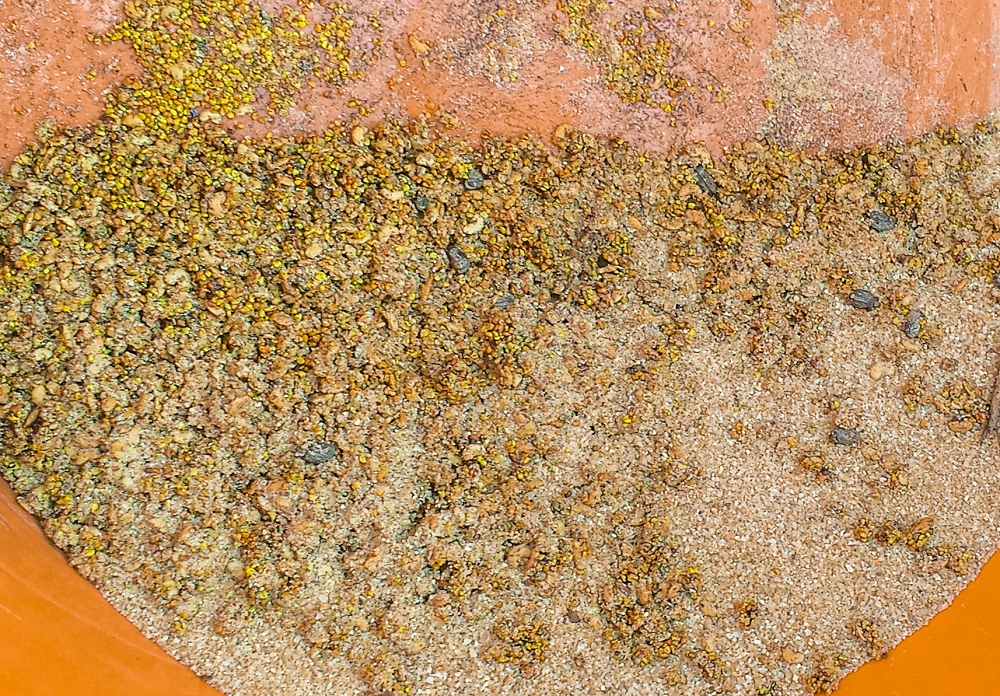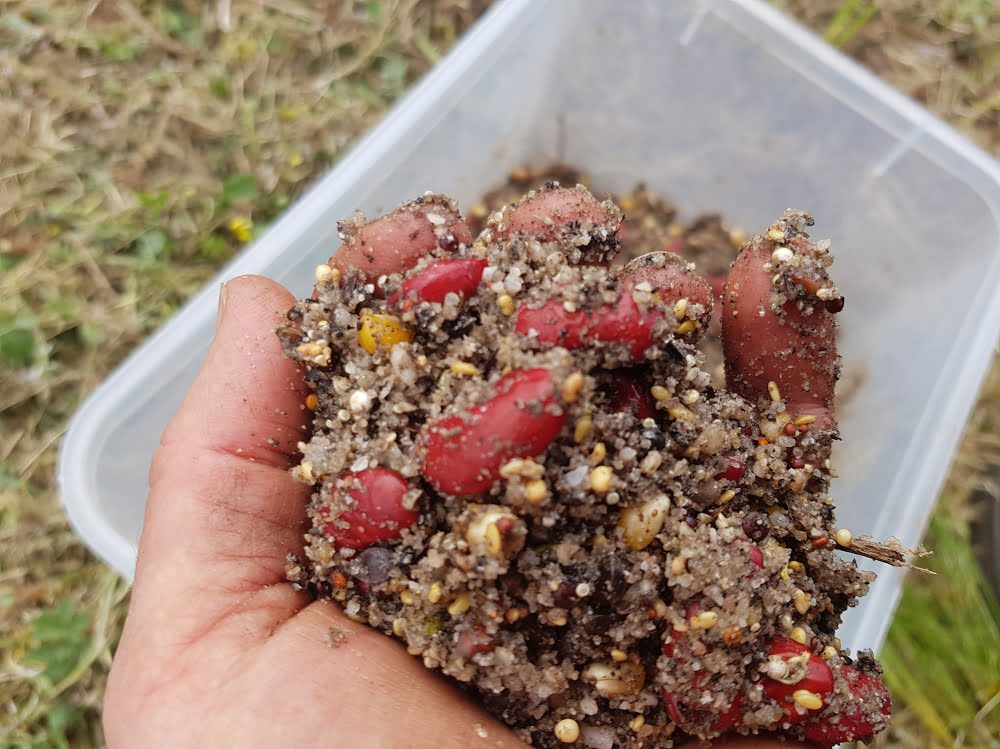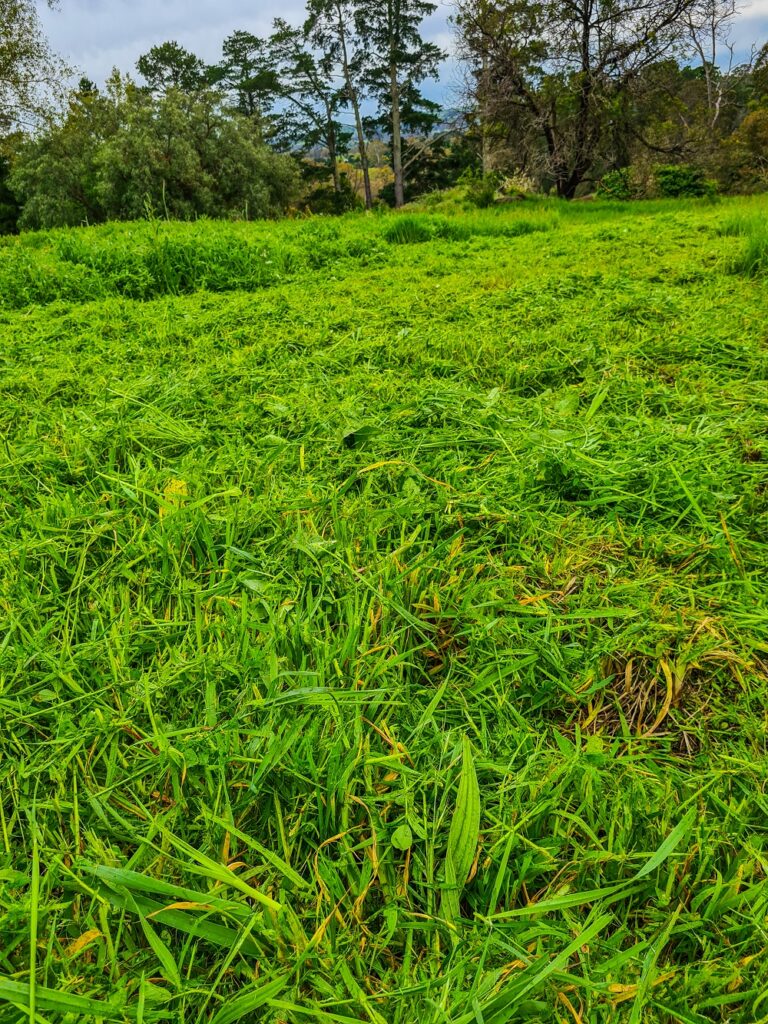Estimated reading time: 8 minutes
We talk about diverse green manures and how important they are for the soil all the time.
It’s a key practice for home gardeners and one of the techniques that helps us maintain healthy soil in our on-farm nursery.
Using green manure to build healthy soil
Our nursery is made up of four different blocks. Once we’ve harvested a crop of trees from any given block, it’s allowed to lie fallow (unused) for a couple of years before we rotate back to the same block.
While a patch is fallow we plant it with a green manure crop. This restores soil fertility, feeds the soil, and replaces the organic matter we’ve removed by growing and harvesting hundreds of fruit trees.
The same principles can be used to improve the soil before you plant fruit trees in your garden or to maintain fertility in your vegie garden.

The science behind diverse green manures
We’ve followed the work of soil scientist Dr. Christine Jones for many years (because she’s amazing)!
One of the things we’ve learned from her and found fascinating is the incredible role that multi-species groundcovers play in soil health.
Hearing Christine speak on the topic inspired us to ramp up our green manure by adding even more types of seed into the mix.
Dr. Jones explains that vegetation in many parts of the world was different prior to colonisation.
The natural grasslands that once covered vast tracts of the Australian, North American, South American and sub-Saharan African continents – plus the ‘meadows’ of Europe – contained several hundred different kinds of grasses and forbs.
Dr. Christine Jones
Several hundred species! Imagine that!
A multi-species crop is an entire community of plants working together to convert sunlight into liquid carbon. Remember learning about photosynthesis at school? The liquid carbon from the plants then feeds the microbes in the soil.
It’s called the plant-microbe bridge. It builds soil by converting carbon from the air into stable compounds in the soil. It also helps soil to hold far more water, and at the same time improves drainage.
How to increase the diversity in your green manures
You may have always used a fairly diverse mix of seeds for your green manure, but imagine if you mixed it up even more.
When we set out to create our own multi-species crop we didn’t quite get to 100 species, but we managed 40. This list might inspire you:
- Alfalfa (lucerne)
- Amaranth
- Basil
- Beetroot
- Broad bean
- Buckwheat
- Butterfly pea
- Chia
- Cocksfoot
- Coriander
- Corn
- Dill
- Endive
- Fenugreek
- Kidney beans
- Lab lab bean
- Linseed
- Medic
- Millet – French white
- Mung bean
- Mustard
- Purslane
- Quinoa
- Radish
- Rocket
- Sesame
- Soybean
- Sunflower
- Turnip
- Vetch

How to plant a green manure
Dr. Jones recommends adding something to inoculate the seeds before you plant them.
For example, you could add a good dose of worm poo out of your worm farm.
We’re also lucky enough to be able to soak the seeds in whey sourced from our on-farm dairy, Sellar Farmhouse Creamery.
These are both great sources of microbes to help the seeds get the best possible germination rate. If you have access to them, why not use both?
Soaking the seeds can leave the seed mix pretty wet, so you might need to mix in enough dry sand to make the mixture easier to spread.
Getting the seed into the ground can be tricky, so we’ll share how we do it in the nursery.
Practical seed sowing – if you have equipment!
We’re lucky enough to have access to equipment. First up, Hugh uses the disc plough to turn in any weeds that are already growing. You can see the result in the next photo.

Those weeds were in effect the first green manure crop, which we then follow up with a more diverse plant mix that will hopefully stay green over summer.
We’re always wary about using equipment like discs, harrows, or rotary hoes because of the way they smash up the soil and can damage microbes, particularly soil fungi.
But you’ve also got to find a way of getting the seed into the soil. Dr. Jones is very much of the opinion that it’s worth disrupting the soil (albeit as minimally and infrequently as possible) to get diverse, perennial groundcover crops established. The benefit should quickly outweigh the initial cost.
The disc does a good job of turning most of the weeds in. However, the surface is still too rough for the seeds to connect with the soil well enough.
So next, we put on the rotary hoe to break up the clumps.

Preparing a good (enough) seed bed
You can see the difference just one pass with the rotary hoe makes (on the left-hand side of the photo above). It’s still not a super smooth seedbed, but it’s good enough for the seeds to hit the soil when they’re broadcast, rather than getting stuck on a clump of grass – where they definitely wouldn’t germinate and grow!
If we had seed-drilling equipment that could inject the seed straight into the soil we could bypass this step. Many innovative regenerative farmers are sowing seeds directly into pasture these days, and getting excellent results. It means there’s no soil disturbance or loss of ground cover at all.

But needs must, so at our place, the next step is broadcasting the seed by hand. It’s always a challenge to scatter the seed evenly over a patch this size, but by dividing the patch into sections and weighing out portions of the seed mix we get a pretty even spread.
Then we rake the whole patch to get a light cover of soil over the seeds. Finally, the whole area is watered in.

What do you do after your green manure grows?
One of the amazing benefits of a green manure crop is that it adds a whole lot of bulk organic matter to your soil.
But to realise the benefit, you need to harvest the crop and – ideally – dig it into the soil. If you have the right equipment, plough it back into the soil, or you can do this job by hand with a shovel if you can manage it.
This job needs to be done while the plants are still green and lush to get maximum benefit, and before the crop sets seed and goes woody.
Sometimes it might not be possible to turn the green manure into the soil at the right time, even if you have the right equipment. For example, if the soil is too wet.
Is mowing the best way to deal with green manure?
The next best alternative is to mow the crop before it sets seed. This will encourage more growth and keep it in the active growing phase. Leave the mowed material on the surface where it will act as a mulch and slowly break down.

Aim to dig the green manure back into the soil when the conditions are better, if possible. If not, continue to mow and water the crop throughout the summer.
Even though it’s a much slower and less efficient process, this ‘chop and drop’ method will still return useful organic matter to the soil.
With some trial and error, aim to find a green manure system that suits your garden. It’s an age-old and very effective way of keeping your soil healthy, especially if you build diversity in from the beginning.
Related Articles
Growing fruit trees is a climate change solution
Feeling worried about climate change? Learn how growing your own fruit can help you make a significant difference in many meaningful ways.
How to make biochar: two backyard methods
Save money and turn waste wood into black gold. Here’s detailed instructions for how to make two biochar systems in your backyard.
How to design a fruit tree guild
Get inspired to create beautiful and productive guilds around your fruit trees to support their health and your whole garden.







